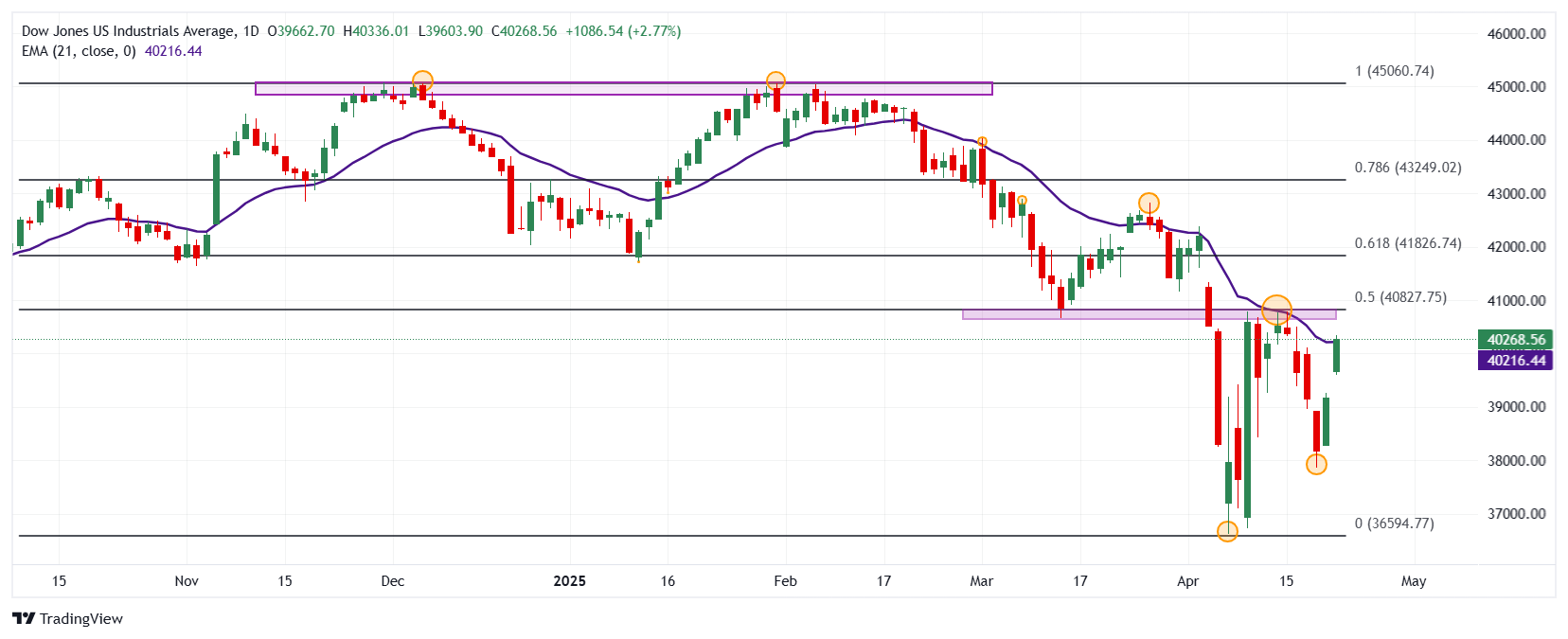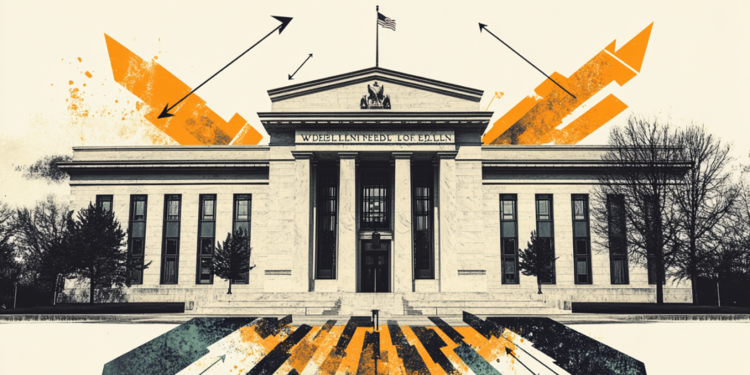- The Dow Jones wins 2.68% in the day, currently quoting about 40,253.
- The Nasdaq 100 rises 3.97% daily, reaching maximums of April 15 in 19.003.
- The S&P 500 rebounds 3.40%, today, led by Super Micro Computer (SMCI).
- The manufacturing PMIS and Global S&P services show mixed results in April.
- The White House considers reducing tariffs to China, probably placing them in a range between 50% and 65%.
The Dow Jones marked a daily minimum at 39,603, finding aggressive buyers who took the index to a maximum of the day in 40,336.
The Dow Jones industrial average began operating at 39,662, while the Nasdaq 100 technological index began negotiations in 18,337. The S&P 500 opened in 5,334, animated by commercial relaxations between the US and China.
Amazon and American Express Company lead the profits in the Dow Jones
The Dow Jones index rises 2.68% today, currently operating at 40,253, signing its second consecutive upward day.
Amazon titles (AMZN) earn 7.08% on Wednesday, reaching maximum of April 14 in 186.75 $. Investors will be attentive to the publication of their profit report on May 1. AMZN is expected to obtain income for 155.1 billion dollars and a gain per share of $ 1,364.
In the same tune, the American Express Company shares (AXP) rebound 6.05% in the day, visiting maximums of April 2 in 270.15 $, spinning two consecutive sessions with profits.
The Dow Jones wins 1085 points at the beginning of the American session, reaching maximums not seen since April 16 in 40,336.
Nasdaq 100 reaches maximum one week driven by Applovin Corporation and Warner Bros. Discovery
The Nasdaq 100 Technological Index rebounds 3.97% daily, visiting maximums of April 15 in 18,989.
APPLOVIN CORPORATION (APP) shares earn 11.30% on Wednesday, reaching top 10 of April 10 at 268.00.
Following the upward perspective, Warner Bros. Discovery (WBD) titles shoot 9.43% in the day, reaching maximum of April 10 in $ 8.78, spinning two consecutive sessions upwards.
The Nasdaq 100 wins 712 points in the day, currently quoting over 18,989, maintaining the upward perspective in tune with the main share rates.
The S&P 500 extends its profits after improvement in commercial tensions
The S&P 500 wins 3.40% today, reaching maximums not seen since April 9 in 5,479.
Based on information provided by the Wall Street Journal, the White House considers reducing tariffs to China, probably placing them in a range between 50% and 65%.
On the other hand, the PMI manufacturing S&P global of April increased to 50.7 points, improving the expectations of 49.4 points and the previous record of 50.2 points. In contrast, the Global S&P services PMI contracted 51.4 points from 54.4 observed in March, worsening the 52.8 forecasts.
The S&P 500 triggers 175 points after this news, operating when writing about 5,457. Super Micro Computer shares (SMCI) earn 11.98% daily, reaching maximum of April 15 at $ 34,99, leading profits in the stock index.
Technical Analysis of Dow Jones
The Dow Jones established a short -term support given by the minimum of April 21 in 37,853. Upwards, the closest resistance is observed at 40,774, maximum of April 14. The following important resistance is 42,820, Pivote Point of March 26.
Dow Jones daily graphics

Dow Jones Faqs
The Dow Jones Industrial Avenge, one of the oldest stock market indexes in the world, consists of the 30 most negotiated values in the United States. The index is weighted by the price instead of capitalization. It is calculated by adding the prices of the values that compose it and dividing them by a factor, currently 0.152. The index was founded by Charles Dow, also founder of the Wall Street Journal. In recent years it has been criticized for not being sufficiently representative, since it only follows 30 companies, unlike broader rates such as S&P 500.
There are many factors that promote the Dow Jones Industrial Average (DJIA) index. The main one is the added performance of the companies that compose it, revealed in the quarterly reports of business benefits. The American and world macroeconomic data also contribute, since they influence investor confidence. The level of interest rates, set by the Federal Reserve (FED), also influences the DJia, since it affects the cost of credit, on which many companies depend largely. Therefore, inflation can be a determining factor, as well as other parameters that influence the decisions of the Federal Reserve.
Dow’s theory is a method to identify the main trend of the stock market developed by Charles Dow. A key step is to compare the direction of the Dow Jones Industrial Avenge (DJIA) and the Dow Jones Transportation Average (DJTA) and just follow the trends in which both move in the same direction. The volume is a confirmation criterion. The theory uses elements of maximum and minimum analysis. Dow’s theory raises three phases of the trend: accumulation, when intelligent money begins to buy or sell; Public participation, when the general public joins the trend; and distribution, when intelligent money abandons the trend.
There are several ways to operate with the DJ. One of them is to use ETF that allow investors to negotiate the DJ as a single value, instead of having to buy shares of the 30 companies that compose it. An outstanding example is the SPDR Dow Jones Industrial Avenge ETF (day). Future contracts on the DJ allow the specular operators about the future value of the index and the options provide the right, but not the obligation, to buy or sell the index at a predetermined price in the future. Investment funds allow investors to buy a part of a diversified portfolio of DJ values, which provides exposure to global index.
Source: Fx Street
I am Joshua Winder, a senior-level journalist and editor at World Stock Market. I specialize in covering news related to the stock market and economic trends. With more than 8 years of experience in this field, I have become an expert in financial reporting.







